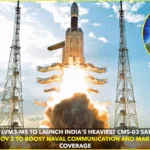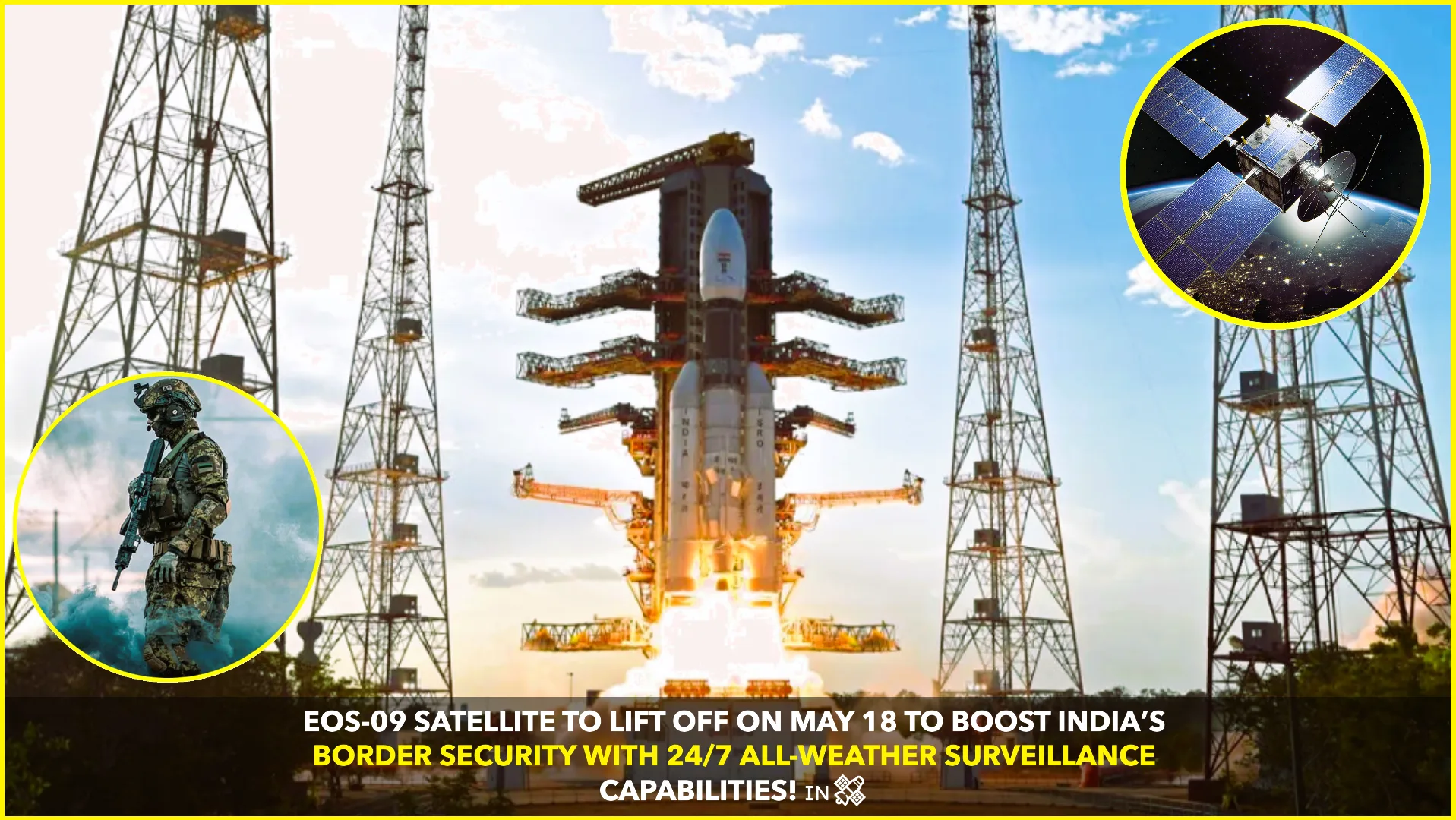India is poised to enhance its space-based surveillance capabilities with the scheduled launch of the Earth Observation Satellite EOS-09 (also known as RISAT-1B) on May 18, 2025. The Indian Space Research Organisation (ISRO) will deploy the satellite aboard the Polar Satellite Launch Vehicle (PSLV-C61) from the Satish Dhawan Space Centre in Sriharikota at 6:59 AM IST.
Strategic Importance of EOS-09
EOS-09 is a radar imaging satellite designed to bolster India’s border monitoring and reconnaissance capabilities. Equipped with a C-band Synthetic Aperture Radar (SAR), the satellite can capture high-resolution images regardless of weather conditions, day or night. This all-weather, round-the-clock imaging is crucial for applications ranging from border surveillance and national security to agriculture, forestry, flood monitoring, and disaster management.
The satellite’s deployment is particularly significant amid heightened security concerns, with the satellite expected to enhance monitoring of sensitive borders and coastlines. The PSLV has a remarkable success rate, having launched numerous critical satellites for India and international clients. Its reliability and cost-effectiveness have made it the backbone of India’s space program. SpaceNews+4India Today+4The Launch Pad+4
Technical Specifications
EOS-09, with a liftoff mass of 1,710 kg, will be placed into a sun-synchronous orbit at an altitude of approximately 529 km. The satellite features five distinct imaging modes, enabling it to switch between ultra-high-resolution imaging, capable of detecting small objects, and broader scans for large-area observation. This versatility allows for detailed monitoring of specific regions as well as wide-area surveillance.
The PSLV-C61 mission marks the 63rd flight of ISRO’s Polar Satellite Launch Vehicle and its 27th in the XL configuration, which is tailored for heavier payloads. The PSLV’s unique four-stage design—alternating between solid and liquid propulsion—enables it to deliver payloads with high precision and flexibility. X (formerly Twitter)+3Wikipedia+3India Today+3India Today
Enhancing National Security
The launch of EOS-09 comes at a time when space-based assets are increasingly integral to national defense strategies. ISRO Chairman V. Narayanan recently highlighted that at least ten ISRO satellites are operating 24/7 to support India’s armed forces with surveillance, communication, and navigation during operations like Operation Sindoor. These satellites monitor borders and coastlines and provide critical intelligence, enhancing India’s defense with technologies such as the Cartosat and RISAT series for high-resolution imaging, and GSAT-7/7A for military communications.
The deployment of EOS-09 is expected to further strengthen this network, providing enhanced imaging capabilities that are crucial for real-time monitoring and intelligence gathering. The satellite’s advanced SAR technology will enable it to penetrate cloud cover and operate effectively during night-time, ensuring uninterrupted surveillance capabilities.
Broader Applications
Beyond defense, EOS-09’s capabilities are anticipated to benefit various civilian applications. The satellite’s high-resolution imaging can aid in agricultural planning, forestry management, soil moisture assessment, and flood mapping. Its ability to provide consistent and reliable data will support disaster management efforts, enabling authorities to respond more effectively to natural calamities. Zee Business+3Wikipedia+3The Launch Pad+3
The launch of EOS-09 underscores India’s commitment to leveraging space technology for national development and security. As the country continues to expand its space-based infrastructure, satellites like EOS-09 will play a pivotal role in supporting a wide range of strategic and developmental objectives.
With the successful deployment of EOS-09, India will reinforce its position as a formidable space power, capable of harnessing advanced technologies to safeguard its interests and contribute to global efforts in Earth observation and environmental monitoring.










